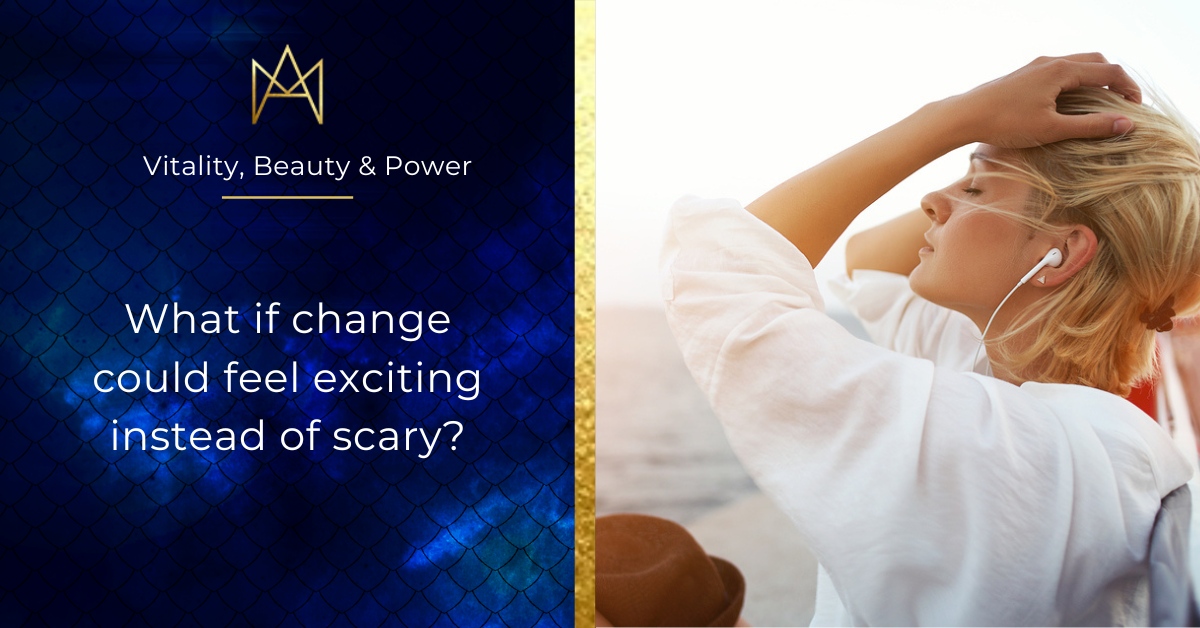
You may not know this, but I nearly became a neuroscientist. 🤓
I fell in love with psychology and art history early on in my undergrad years. But then I took an entry level neuroscience class my junior year of college and I was immediately intrigued.
Geek-ing out on the science of the brain lit something up inside of me, and that fire still burns bright today.
Fast forward more than 30 years later 😳 and you’ll find me still geek-ing out on neuroscience – but this time it’s a kind of neuroscience that allows me to work directly with my own nervous system (or the nervous system of my clients) to create the changes I want to see in the rest of my life.
*Think instant nervous system regulation, immediate calm, and over time the rehabilitation of the nervous system and various coping patterns and behaviors that have taken hold and kept you stuck.*
Why am I sharing this with you?
I’ve always been curious about why some people embrace change or seem to be constantly changing, while others seem unable to make the changes they know they need to make to feel better, even when they are suffering greatly.
I now understand that change itself can feel deeply threatening to our nervous systems.
The thinking part of our brains might understand how good and important change is, how it will create the results we deeply yearn for, and the long list of reasons why we should want change.
But the animal/protective parts of the brain really prefer it when things stay the same. They like predictability and prioritize safety above all else. The animal/protective parts of the brain will fight any changes we might want to make, no matter how well reasoned those changes are.
When it comes to creating change, a little tug-of-war develops inside of us. Guess who wins most of the time? You guessed it. The animal/protective parts of the brain.
Change of any kind is often perceived as a threat to the nervous system. The degree of threat is usually determined by how big the change is, but also by how safe the nervous system feels in the face of change.
What I’ve discovered is that we can work directly with the nervous system while we are creating change in our lives – be they changes to your home environment, relationships, health, diet, daily routine, professional life or anyplace else. And doing so helps us to feel safe even when change is afoot.
When we can create a sense of safety, the animal/protective parts of the brain are far more ready to come along for the ride instead of resisting every step of the way. Changes are more easily made with a much higher success rate, and for much longer periods of time.
There are ways to work with our beliefs, too.
At a cognitive, thinking level of the brain, it may see like it’s no big deal to change our beliefs. But our animal/protective brain may have been using that belief as a way to protect itself for years. Trying to create change on the thinking level alone might feel like an imminent threat to a different part of our brain.
But, when we create regulation and safety in the overall nervous system and animal/protective brain FIRST, we are far more able to create change without activating that sense of alarm in our bodies and brains.
Over time, creating change can begin to feel exciting and nourishing instead of alarming and life-threatening.
I am learning a treasure trove of simple tools and skills to help create a deep, lasting sense of safety in the nervous system and body so that health changes and personal evolution doesn’t feel like we’re going to die.
My goal is to create safety – in myself, but also in my clients! – so that it feels good to explore our growth edges and be curious (instead of scared) about what is right about the changes we want to make.
There’s so much more I’ll be learning and incorporating into my own life and healing journey. And from that place, so much more I’ll be able to share with you.
Stay tuned!


Share Your Comments & Feedback